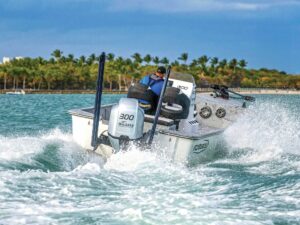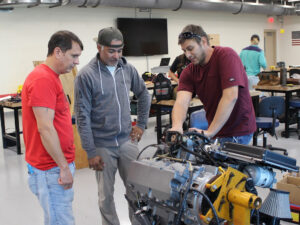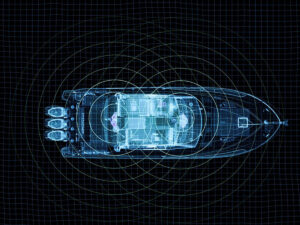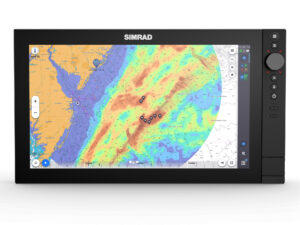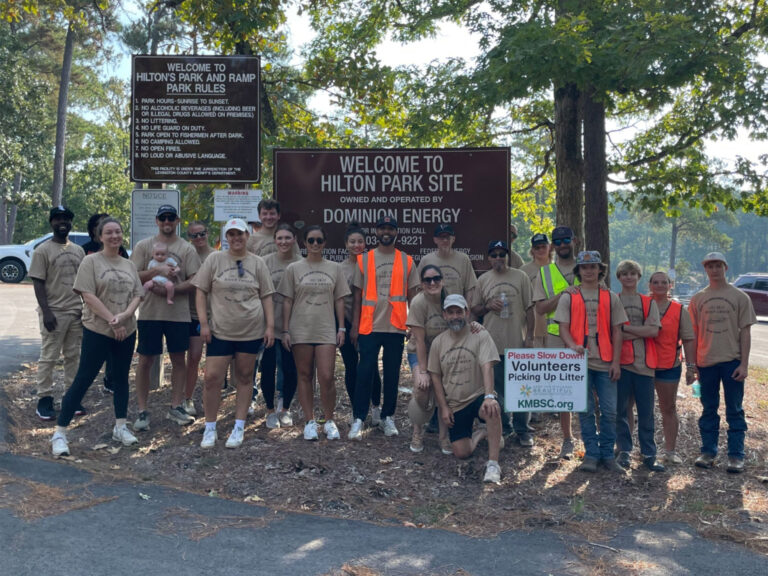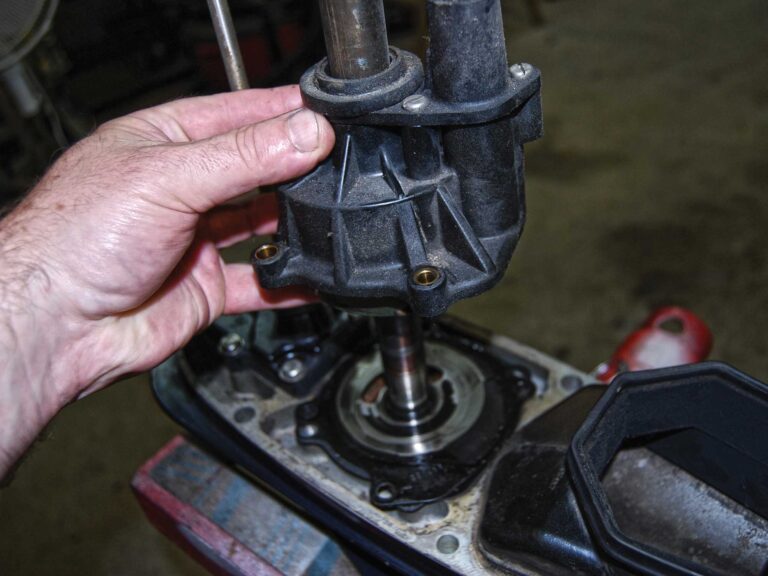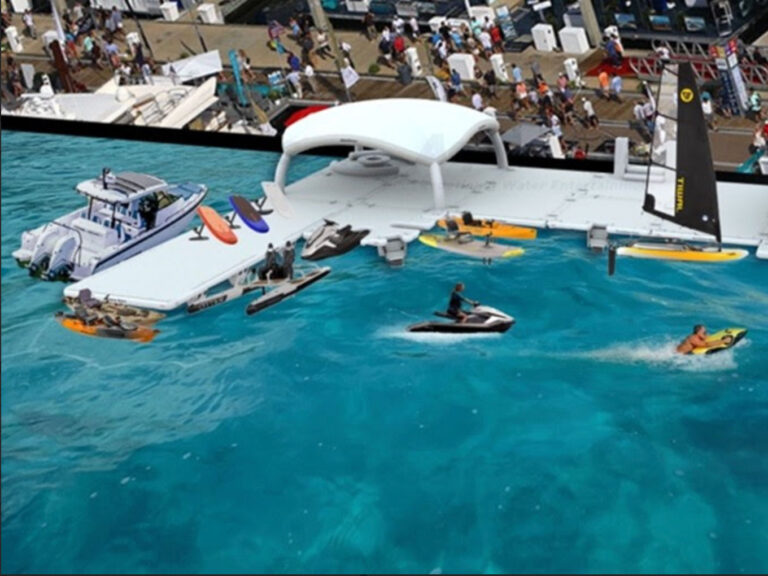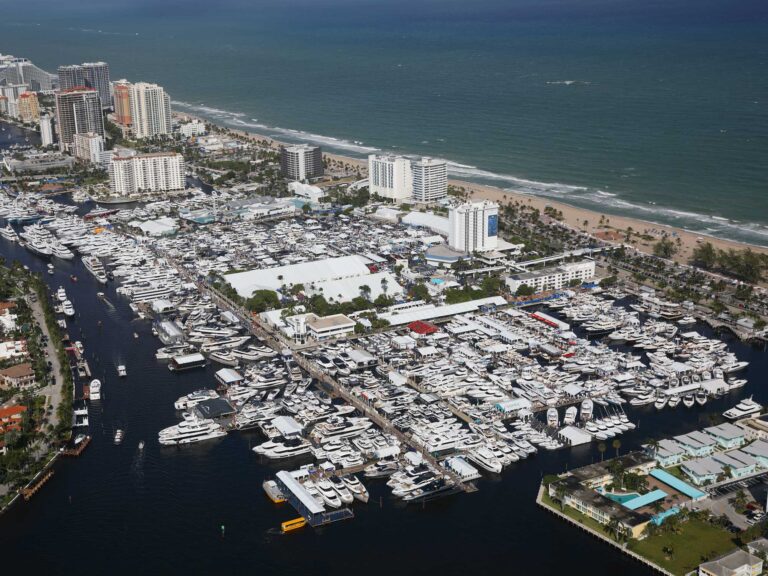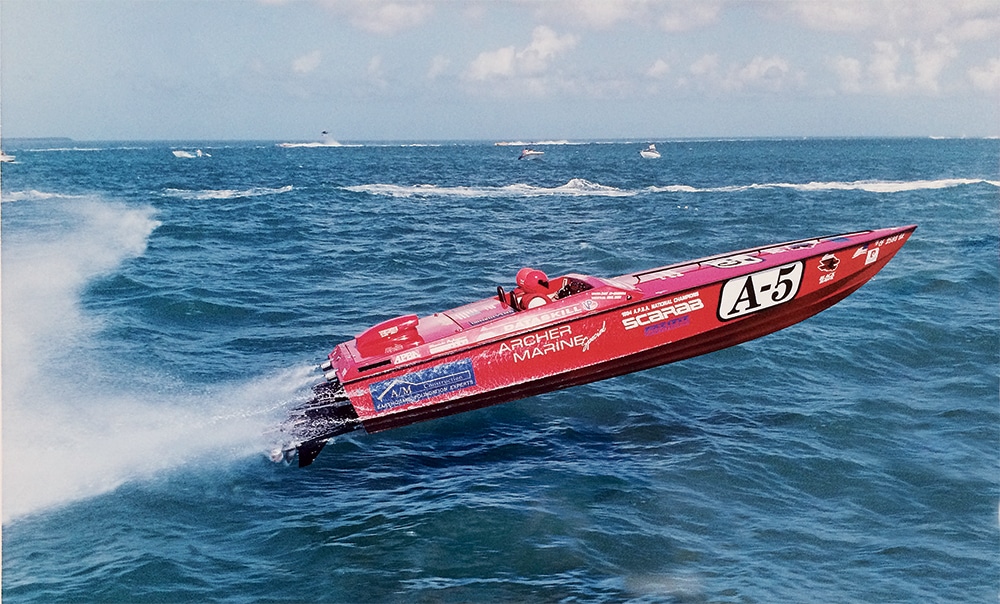
When most people hear the term surface drive, they think speed and high performance, but what these rather specialized propulsion units are really about is efficiency. Because the propeller blades break the water’s surface — they are called surface-piercing propellers — the engines powering them run under less load than with fully submerged props. Half of the propeller spins in the water. The other half rotates above the surface. This lets the boat make better use of the power of its engines and go faster than one with submerged props.
The best known of these units is the Arneson surface drive, which was developed by Howard Arneson, who also invented the automatic swimming pool vacuuming system. Arneson tested the prototype on racing catamarans before manufacturing it for consumer use. Arneson drives remain popular for use on high-performance catamarans and V-bottoms, and larger versions are used on performance yachts such as those built by Pershing and Mangusta. Surface drives offer shallower draft than inboards do.
Many people don’t realize it, but the popular Mercury Racing Dry Sump Six, M8, NXT and Bravo One XR Sport Master short drives are all surfacing units. Mercury also built a surface drive with twin counter-rotating propellers called the Blackhawk for a short time in the early 1990s. The Dry Sump Six, M8 and NXT are for engines rated at 700 hp or more, while the Bravo One is best used in applications with engines producing fewer than 600 ponies.
While the Arneson and the Mercury products are also used to turn the boat, some surface drives utilize fixed shafts, like an inboard does. The Trimax, which was developed by Italian designer Fabio Buzzi, uses a rudder. So do BPM surface drives, which are popular in offshore powerboat racing and poker running.
It might come as a surprise that a boat doesn’t necessarily need to be designed for surface drives. A V-bottom would need some rocker to generate bow lift because surface drives don’t create any, but a bottom designed for straight inboards or sterndrives can see performance and efficiency gains with surface drives. Among the first performance V-bottoms to break the 100 mph mark was a nonstepped Hustler 32 powered by 630 hp engines and Arneson drives.
The biggest downsides to surface drives are that they make docking more challenging because they lack the blade surface of a submerged prop and that they extend well aft of the hull, sticking out like appendages. But when you’re in search of speed and efficiency, looks aren’t everything.

